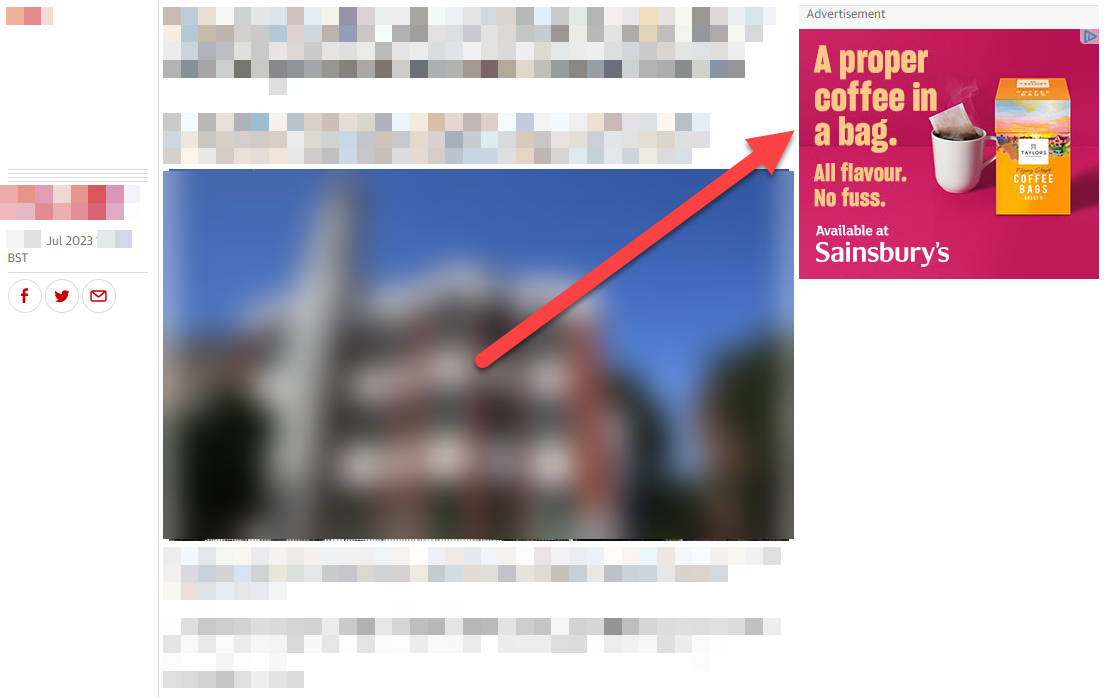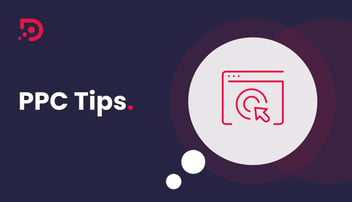With over 2 million sites, apps, and videos in the network and a wealth of targeting options, Google display ads are an incredibly powerful tool for SaaS and B2B advertisers looking to get their ads in front of relevant users around the internet.
These ads are easy to integrate into a wider B2B marketing strategy and can give your business an effective way to increase brand awareness, visibility, engagement, and revenue.
To make the most of Google display ads, businesses need to know what they are, how they work, and how to effectively run and monitor campaigns. This blog post will cover all of the above and more, including:
- What Google Display Ads Are, and Why They’re Important
- The Differences Between Google Search Ads and Display Ads
- Understanding Targeting Options and Audience Segmentation
- Creative Strategies For Ad Design and Copy
- How to Measure and Analyse Ad Performance
- Case Studies
What Google Display Ads Are, and Why They’re Important
Google display ads are adverts displayed on the expansive Google Display Network (GDN), which reaches over 90% of global internet users. The ads are image-based and can contain text copy.

An example of a Google Display Ad on a popular newspaper website
Google display ads are served with a Pay-Per-Click (PPC) model, meaning that you bid in real time for your ad to appear, and are only charged when an ad is clicked. You can also pay for conversions only, by using the CPA bidding option (note that your account must meet certain eligibility standards to use this).
The GDN includes more than 2 million locations for your ads to appear, across websites, videos, and apps. Google display ads come with highly sophisticated targeting options, allowing you to display your ads to people with a direct interest in your offering, or in related areas and pastimes.
Why Google Display Ads Are Important
It’s all very well knowing what Google display ads are but to truly understand their appeal, you need to understand the benefits. Here are some ways that these ads can help your business:
- Boosting brand awareness: thanks to the vast size of the GDN, it’s easy to ensure repeated exposure to your ads. This primes potential users to consider your brand when the need arises.
- Boosting reach: the size of the GDN also means that you can target users who may be outside your usual marketing net. With over 90% of internet users exposed to the GDN, the potential reach is staggering.
- Easy to tailor to your goals: Google display ads can be used to drive sales, generate leads, increase traffic, or build brand awareness.
- Precision targeting: Google offers the tools to target very specific audiences, meaning your ads are only shown to the right people in the right places.
- Flexible budgeting: there are also tools to ensure your budgets and bidding strategies are optimised, meaning full control over what your business is spending.
- Remarketing: Google display ads are a powerful remarketing tool, and in the context of B2B where sales cycles are longer, keeping your brand and message in front of users is more likely to lead to a conversion.
- Easy to measure: the most effective ad campaigns are those that can be tracked, measured, and refined accordingly based on data collected. Google’s analytics tools are replete with options for monitoring performance, giving B2B businesses the information they need to make ongoing strategic refinements.
The Differences Between Google Search Ads and Display Ads
The key difference between these two ad types is that Google search ads appear in native Google search results, whereas display ads can appear anywhere on the Google Display Network.
The two are also tailored to slightly different purposes and outcomes. Here’s what to consider:
- Search ads are served primarily according to the keyword(s) in a user’s search term, whereas display ads are served according to the location and user information.
- Search ads are text-based, while display ads are visual and can include images and/or videos.
- You can expect Search ads to have a higher cost-per-click (CPC) because they are driven primarily by intent.
- Search ads also usually have a higher click-through rate (CTR) for the same reason: i.e., it’s more likely that an ad will map directly onto a user’s intent. Display ads are aligned better with building awareness and visibility over time.
The type of ad used, or the balance between the two if both are used, will depend on your business objectives.
Understanding Targeting Options and Audience Segmentation
The purpose of targeting ads and segmenting audiences is to ensure that your ads are only displayed on sites relevant to your offering, and by people who have a genuine interest in your business. Effective targeting will be instrumental in achieving your business objectives and will contribute to reducing or eliminating wasted ad spend.
There are several ways of targeting Google display ads, of which audience targeting and demographic targeting are the most common.
Let’s take a look at each.
The Types of Audience Targeting
Tailoring ads by audience will be the most intuitive choice for most advertisers. Here are the available options.
Affinity Audiences
This is a collection of groups based around an interest or hobby. Currently there are 80 groups, and you can select the one(s) which you feel are a close fit for your business.
You can see the available Affinity Audiences here: note that the majority are perhaps better suited to B2C contexts than B2B.
Custom Affinity Audiences
Custom Affinity Audiences grant a higher level of customisation than Affinity Audiences. Rather than selecting one or more of the default audiences, you can use keywords and URLs to refine your targeting.
For B2B businesses this opens up the possibility of targeting potential users with very specific interests, or of targeting users who browse industry websites and applications that you feel represent a particularly good fit for your business.
In-Market Audiences
This audience includes users who are already browsing products or services similar to the ones you offer. By targeting users who are close to making a purchase, you can get your message in front of people who are highly motivated to buy, and who may consider your product or service in favour of the one they’re already looking at if the deal is better.
Note: you may see references to ‘similar audiences’, but this option was removed by Google in May 2023. See their announcement to this effect here.
Criteria For Demographic Targeting
Here are the criteria that can be used for demographic targeting. You might be surprised at how limited these options seem, but bear in mind that they can be used to further fine-tune Custom Affinity Audiences and In-Market Audiences:
- Age: the options are “18-24,” "25-34," "35-44," "45-54," "55-64," "65 or more," or "Unknown"
- Gender: the options are "Female," "Male," or "Unknown"
- Parental status: the options are "Parent," "Not a Parent," or "Unknown"
For SaaS and B2B businesses some of these criteria may not seem immediately useful, but there are some ways to use them strategically. If you’re targeting C-Suite customers for example, leaving the first few age brackets out might be justified.
Creative Strategies For Ad Design and Copy
With all ads, it’s important to capture user attention and clearly communicate the benefits and desired course of action as quickly as possible. Users have a short attention span and are often less likely to engage with adverts than other content, so making an effective first impression is especially important.
Google offers an extensive guide to creative best practices for display ads here, and we’ve rounded up some key concepts below:
- Ensure correct resolutions are used: minimum and recommended sizes are available for each format (landscape, square, and portrait). Meeting the criteria will ensure your images are clear and legible on all devices, and will increase engagement.
- Use high-quality images: avoid blurring, excessive filtering, skewing of angles, and other alterations that may reduce the quality of any imagery. It should be clear what an image represents and why it is used.
- Do not overlay logos on imagery: this can be visually repetitive and reduce the visual effectiveness of the ad. Your logo will be shown along with the ad headline, so there’s no need to add it again.
- Do not overlay text on imagery: as above, imagery overlaid onto an advert can duplicate headline text and cause unnecessary clutter.
- Do not overlay buttons on imagery: this directly violates Google’s Ads policy, as the ‘button’ promises something different to what actually happens when the ad is clicked.
- Make your product or service the focus: the majority of the visual space should be taken up by your product or service, rather than by white space, backgrounds, or other irrelevant content.
- Prioritise real, high-quality photography: avoid digital composites and use high-quality photos with real shadows and lighting. This is to give users an accurate reflection of the product.
- Use the right aspect ratio for your logo: this should be 1:1 or 4:1 and should be sized to be legible in responsive formats.
- Write effective headlines and text: you have an 80-character limit to describe your product, service, or brand, and communicate the benefits.
- Really think about the benefits: this type of ad has the power to change a user’s purchasing decision at the last minute, so communicating offers, promotions, or other benefits is encouraged.
Designing effective ads is tricky, and is made easier by experience. We recommend using trial and error to see what works and what doesn’t, and to commit to ongoing monitoring and adjustments to ad content and design. We also recommend tapping directly into the expertise of a specialist B2B PPC agency.
How to Measure and Analyse Ad Performance
To be as effective as possible, Google display ads campaigns need to be measured and analysed. This lets businesses make adjustments over time to improve the results they yield and their value.
Here are some key metrics to keep track of:
- Clicks: how many times your ads have been clicked.
- Impressions: how many times your ads have been served.
- Click-Through Rate (CTR): the number of clicks divided by the number of impressions: a ratio that’s useful for gauging how compelling your ads are.
- Average Cost Per Click (CPC): the average charge for each click your ads receive, useful for understanding the top-level campaign cost.
- Conversions: the number of clicks that have led to a commercially desirable outcome, whether it be a purchase, a signup, or something else.
- Conversion Rate: the ratio of clicks that have converted to those that haven’t, useful in understanding whether your landing page is effective at converting visitors.
- Cost per Conversion: a more useful metric for evaluating campaign cost, that shows how much each conversion costs you.
- View-Through Conversions: with display ads there is a higher chance of users converting at some point in the future after seeing your ad, and this metric tracks any such conversions that occur within 30 days.
Understanding which metrics to track and what they mean for your business is crucial in gauging campaign effectiveness, and in making ongoing strategic decisions about how your campaigns should run.
In Conclusion
Google display ads are a powerful way for your business to advertise to a precision-targeted slice of Google Display Network users. And with a user base that encompasses over 90% of internet traffic, this is an opportunity that no business should miss out on.
To advertise effectively with display ads, businesses need to understand how these ads work, their relative benefits compared to other ad types, and ways to target, design, and monitor their ads. In this blog post we’ve covered all of these areas, giving you the information you need to set up and run effective display ad campaigns.
Interested in every element of B2B Google Ads? We’ve got you covered. Find out more through one of the article below:
- Google Search Ads for B2B
- Google Ad Copy for B2B Marketing
- Google Ads Remarketing
- Google App Campaigns for B2B
- Google Shopping Ads for B2B
- YouTube Ads for B2B
Or, why not check out our Google Ad Best Practice + Audit Template.




